Interwar US Navy & USMC Camouflage Reference Contents:
Yellow Wings Color Scheme (1922-1941)
The era of Interwar Yellow Wing USN Aircraft stands as a pivotal chapter in the annals of US Naval Aviation, tracing its roots back to the early 20th century when Captain W.I. Chambers was appointed as the overseer of all aviation affairs within the USN in 1910. While the CV-1 Langley was recommissioned as a carrier in March 1922, it wasn't until October of that year that the inaugural aircraft took flight from its deck, marking the dawn of a new era in naval aviation.
During this significant period, Navy Aircraft boasted a distinctive appearance, characterized by overall Aluminum-doped fabric complemented by orange yellow wing tops on the upper wing and aft horizontal stabilizer. Despite the official order forthe yellowpaint not being issued until May 1925, this vibrant hue had unofficially become a standard practice since 1920, serving as a crucial aid in locating aircraft that had made forced landings in water. The aircraft were adorned with a National white star,with a red circle in its center against a blue disc. Aircraft insignia were to be placed on the upper and lower wings, with the aircraft's Bureau Number prominently displayed on the fuselage sides. The size of the star was intricately determined, reflecting the precise dimensions between the leading edge of the wing and the leading edge of the ailerons, while its position along the wing spanwise was meticulously defined by the wing's chord. E.g. if an aircraft's wing had a 3 foot chord the disc would be painted three feet from the outer edge of each wing.
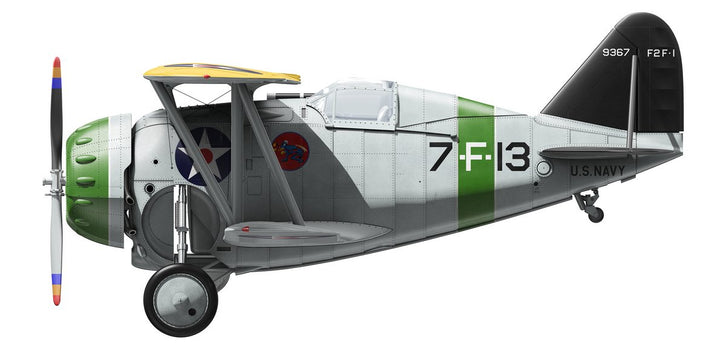
However, early silver paint formulas encountered significant challenges in adhering to metal surfaces, prompting the Navy to introduce a substitute Aircraft Gray paint. Although akin to silver in tone, this gray variant exhibited varying shades, with aircraft stationed on ships more likely to receive this distinctive paint application.
By 1934, notable advancements in paint formulas ushered in a resurgence of silver paint on metal surfaces, with newly constructed aircraft proudly flaunting all-over silver finishes. Aircraft undergoing overhaul during this period underwent a transformative process, with their once-gray surfaces repainted to gleaming silver. Notably, monoplanes emerged as the epitome of sophistication, exclusively adorned in resplendent silver tones, without any hint of gray substitutes. This transformative period not only marked technological advancements but also symbolized the enduring spirit of innovation within US Naval Aviation.
Color Guide to the Yellow Wing US Navy Aircraft Scheme
- Orange Yellow: It was a golden yellow color with a subtle orange tint. In 1943, it was replaced by ANA 614 Orange Yellow. If we talk about modern analogues, the closest is FS 33538.
- Aluminum: Not to be confused with a natural metallic finish. It is an aluminum lacquer with a moderate metallic sheen. All dull metallics are well suited to imitate this color.
- Aircraft Gray: This light gray color was used as a substitute for Aluminum to paint the metal covering of airplanes in the early 1930s. It had almost the same shade as Aluminum, but did not have the distinctive metallic sheen. This color also had a successor in the ANA palette - Aircraft Gray ANA 512. The closest modern counterpart of this color is FS 16473 ADC Gray.
| Original Paint | Orange Yellow | Aluminum | Aircraft Gray |
| Scheme | |||
| General (1922-1933) | Wing Tops | Overall (Fabric) | Metal Parts |
| General (1934-1941) | Wing Tops | Overall | |
| Equivalents | |||
| FED-STD | FS 33538 | FS 17178 | FS 16473 |
| Pantone | 7408 U | 877 C | 442 C |
| RAL | RAL 075 70 70 | 9006 | RAL 180 70 05 |
| BS | 08 E 51 | - | BS381C 676 |
| HEX | #EFA01B | - | #A1ABA7 |
| Arcus Colors | - | 079 | 537 |
Photos of US Navy Yellow-Winged Aircraft of the 1930s

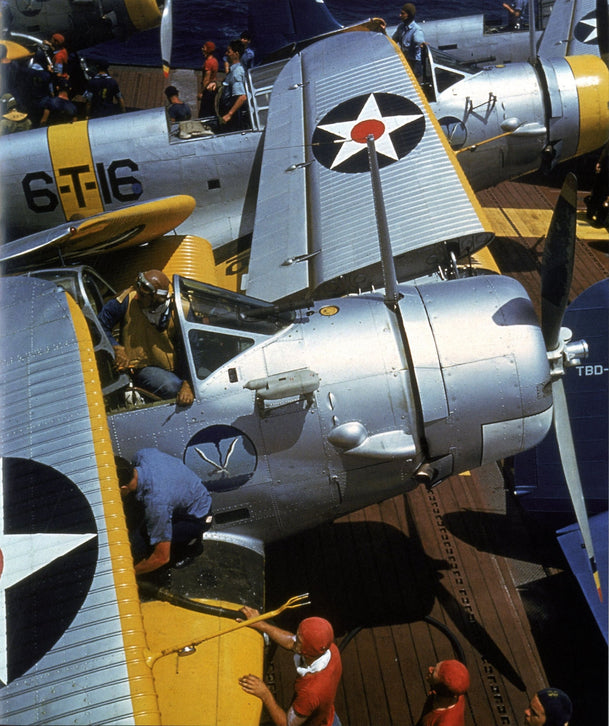
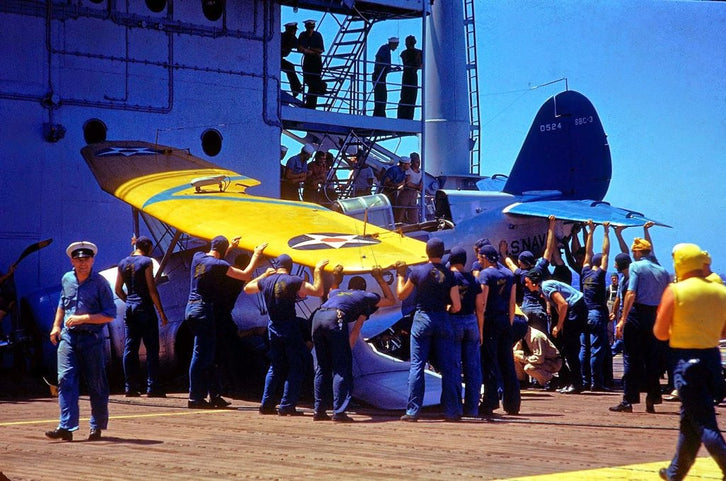
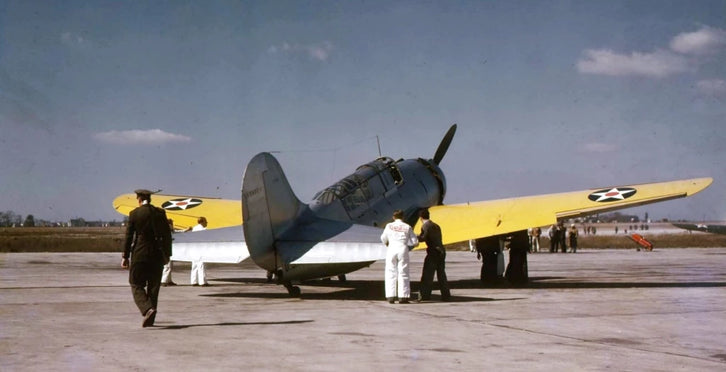
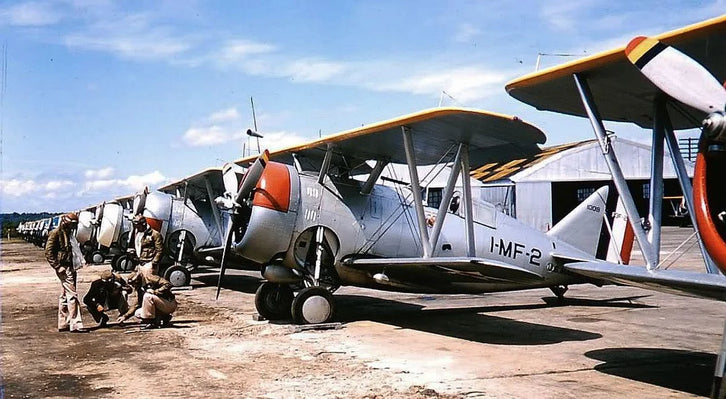
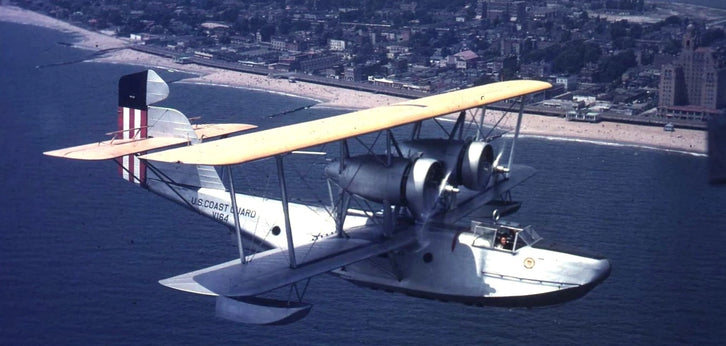
References to the Yellow Wings Scheme:
- John M. Elliot,The Official Monogram U.S. Navy and Marine Corps Aircraft Color Guide, Vol 1: 1911-1939,Monogram Aviation Publications (1987)
- John M. Elliot, The Official Monogram US Navy & Marine Corps Aircraft Color Guide Vol 2 1940-1949, Monogram Aviation Publications (1988)
- Jeff Groves, U.S. Coast Guard Hall PH Flying Boat Color Photographs
- Jeff Groves, Curtiss XSB2C-1 Helldiver Prototype Color Photographs
- Thomas E. Doll, US Navy Aircraft Camouflage & Markings 1940-1945, 6087, Squadron/Signal Publications (2003)

